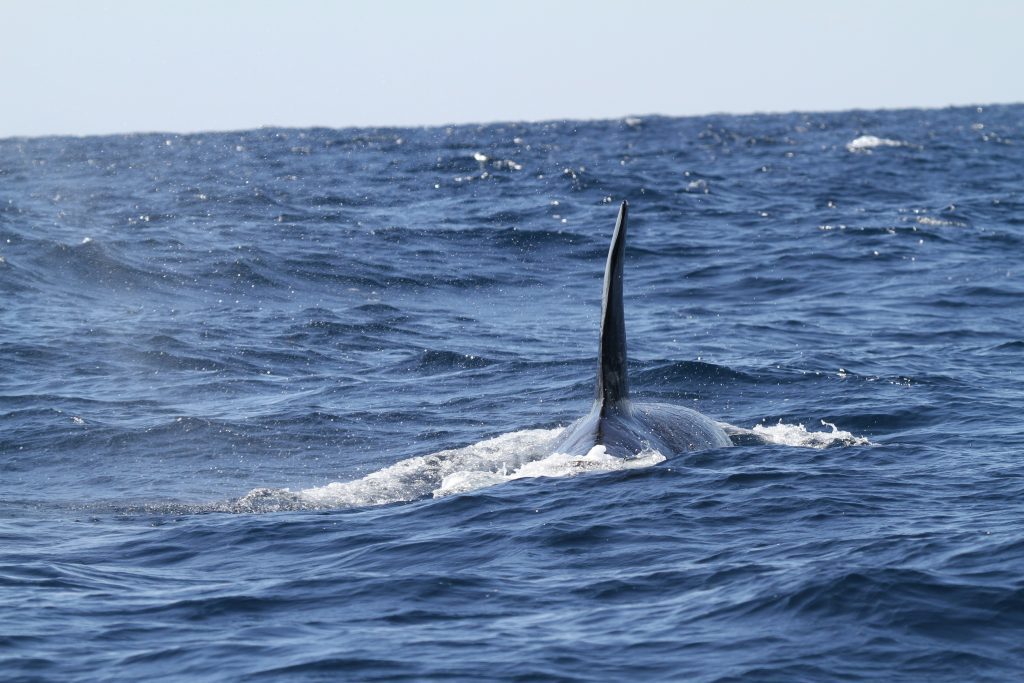New legislation is a ‘course correction’ to bring consistency to MPAs
March 12, 2024 | 6 min. read

By SeaBlue Canada contributor, Holly Lake
When it comes to protecting Canada’s marine spaces, current conservation measures are a bit of a patchwork quilt.
While some Marine Protected Areas (MPAs) explicitly ban oil and gas activity, at least one expressly allows it. And in some that permit oil and gas exploration and drilling, fishing is prohibited.
“Every MPA is different,” says Mike Kofahl, a staff lawyer with East Coast Environmental Law, one of eight member organizations of SeaBlue Canada.
“It’s really kind of a piecemeal approach. Prohibitions [vary] depending on where they are in the ocean. It also depends on the age of the MPA, as the style of regulations have changed a bit over time.”
And yet the point of designating an area is to protect marine life from harmful activities to help them recover and thrive, preventing further loss of biodiversity.
In April 2019, the federal government announced a minimum protection standard, which set out a baseline to provide consistency and clarity around prohibited activities within the boundaries of a protected area.
Drawing on International Union for the Conservation of Nature (IUCN) standards and guidelines, it means oil and gas exploration and exploitation, mining, dumping and bottom trawling are a no-go in all new marine protected areas.
In addition to new MPAs created under the Oceans Act by Fisheries and Oceans Canada, the standard also applies to National Marine Conservation Areas established by Parks Canada and Marine National Wildlife Areas created by Environment and Climate Change Canada.
Unfortunately, the minimum protection standard only applies to MPAs established after 2019. Further, the federal government hasn’t had the legal tools to rescind existing oil and gas leases within existing MPAs on the East Coast.
However, new proposed legislation that aims to create a regulatory framework for offshore renewable energy projects also includes provisions that can help address outstanding issues with offshore oil and gas.
If passed, Bill C-49 would amend the Canada–Newfoundland and Labrador Atlantic Accord Implementation Act and the Canada-Nova Scotia Offshore Petroleum Resources Accord Implementation Act (known collectively as the Offshore Accords Acts) to allow the federal government to make regulations banning offshore oil and gas activity with areas that have been or may be identified for environmental or wildlife protection or conservation.
These regulations can prevent work from starting or continuing in a protected area, and halt the issuing of new offshore interests.
The bill’s amendments would also allow federal and provincial governments to negotiate for the surrender of oil and gas leases in exchange for compensation if they’re within areas identified as likely candidates for protected areas, or if they’ve already been designated as such.
If negotiations for the surrender of a lease fail, the federal and provincial governments can jointly cancel it.
Until now, there has been no way under the Offshore Accord Acts to rescind oil and gas interests in areas set aside for environmental protection or conservation.
“There was a historic title to the oil and gas resources under the seabed that made it really difficult to rescind leases,” Kofahl says, noting it went beyond a lease or license that expired after a certain number of years.
“Essentially, these companies had rights that were absolute and unlimited in duration. And they took precedence over conservation objectives.”
For that reason, having a mechanism to negotiate and compensate for the interests, and one to simply get rid of them if a party is not engaging in good faith, is most welcome.
“I think it’s a diplomatic approach,” Kofahl says.
While it’s very likely most of those existing oil and gas rights in MPAs would never have been developed, he says it is a good compromise to set out a clear way to get rid of the destructive potential of exploration and seismic testing, drilling and production.
Kofahl points to The Gully, which was the first MPA created off Nova Scotia’s coast in 2004, as a prime candidate. Despite its conservation objectives of protecting whales and their habitat, as well as the seafloor, from harmful human activities, there are existing petroleum rights within its boundaries.

“We obviously don’t want oil and gas in MPAs. Of all the activities going on offshore, it is one of the activities that most clearly doesn’t not belong in an MPA with conservation objectives.”
The proposed amendments in Bill C-49 help resolve this conflict and offer up “a course correction” to potentially harmonize protections and prohibitions across all MPAs, Kofahl says.
This will help achieve conservation goals on the Atlantic coast, and be key to meeting the targets Canada has committed to national and internationally. These include the interim national target of protecting 25% of the ocean by 2025, and 30% by 2030, to halt and reverse biodiversity loss. The latter is a commitment Canada made at COP15 in Montreal in late 2022, when it signed onto the Kunming-Montreal Global Biodiversity Framework (GBF).
In terms of global accounting, some jurisdictions do not consider an area protected if there is potential for oil and gas activity in it, regardless of how it’s been designated.
“If you’re going to have a protected area, it needs to be more than something on paper,” says Stephanie Hewson, a staff lawyer at West Coast Environmental Law, a member of SeaBlue Canada.
“It needs to actually mean something in the ocean.”
To date in Canada, it hasn’t always.
Last year, the Newfoundland and Labrador Offshore Petroleum Board put out a call for exploration bids in an area that overlapped with the Northeast Newfoundland Slope Closure, a marine refuge created under the Fisheries Act that spanned an area of about 10 times the size of Prince Edward Island.
The refuge’s conservation objective, as set out on the Fisheries and Oceans Canada website, is to “protect corals and sponges and contribute to the long term conservation of biodiversity.”
While fishing is banned within the refuge, exploratory drilling is not, and oil giant BP stood by its decision to do so. What’s more, federal Natural Resources Minister Jonathan Wilkinson said if oil was discovered and BP wanted to pursue production, the refuge’s boundaries could be redrawn.
Hewson says the situation meant the government wasn’t able to count that portion of the refuge towards its conservation target.
“There needs to be a mechanism that says if we’re closing an area to fishing, then we’re also closing it to other extractive activities because the point is for it to be protected,” she says.
“Bill C-49’s amendments will help address that kind of problem. That’s really crucial to making sure the government can count all these areas as identified towards the targets and also make sure those numbers mean something.”
And as much as the proposed amendments are backward looking in terms of leveling up MPA protections, they’re also forward looking, as they extend to offshore renewable energy projects and keeping those interests out of areas intended for conservation.
While developing marine renewable energy is part of the clean energy solution to the climate crisis, they must be managed responsibly and sustainably. Like any industrial activity, renewable projects have the potential to harm the marine environment in a host of ways. Whether the project involves tidal, wave, geothermal, ocean current, osmotic or wind energy, it can increase ocean noise, create electromagnetic fields, and alter habitat, as well as increase vessel traffic and pollution.
For this reason, many jurisdictions prohibit or strictly limit renewable energy projects within MPAs.
Although Canada has set out minimum protection standards within new MPAs, there is currently no law or policy on the books that deals with renewable energy projects in protected areas.
But as efforts to develop wind energy off the East Coast in particular ramp up, Hewson says the legal framework set out in Bill C-49, including the ability to negotiate the surrender of licenses and interests, as well as prohibit the issuing of them, is much needed.
The proposed amendments will allow projects to be thoughtfully planned to ensure things make sense and work in tandem with conservation goals.
On the one hand, the oil and gas piece of the bill is a continuation of something Canada’s already started, Hewson says. On the other, the renewable energy provisions recognize a new and emerging industry that needs to be accounted for in the marine conservation context.
“I think having those pieces together makes it a really strong legislative proposal for marine conservation,” she says, as the amendments can help facilitate the clean energy transition through the development of offshore renewables while ensuring responsible stewardship of marine biodiversity.
“So as a coalition, we’re really excited to see this passed into law and to come into force.”